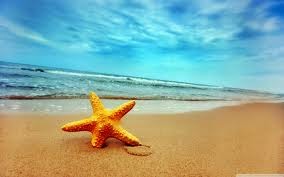Seoul-Incheon, South Korea: The Adventure Part 1
It was not long ago when I decided to apply for tourist visa to South
Korea. This is actually my first time to apply a visa for tourism purposes in
any other country. Of course, my expectations were high, but deep inside me, I
felt both the excitement and anxiety of what awaits me in the Korean nation.
So, I got the courage to travel while I was on my way to my home country, the
Philippines.
Initially, I planned a vacation with my niece, but due to visa
restrictions and time constraint, the plan was aborted and at the end, I was
alone in a travel I have dreamed of long ago, but planned in a very short time.
My strategy was to cover to Korean cities, Incheon and Seoul and perhaps the
nearby areas.
Incheon is considered the third largest Korean city and part of the
larger Seoul metropolis. It is the home of the Seoul International Airport,
being a major gateway to the South Korean nation. Noticeably, the city is
considered one of the closest cities to China being separated by the Yellow Sea
and North Korea, which is just hundreds of kilometers away.
This is the part 1 of my blogpost of my Korean adventure. See the
various places I have visited in my short stay in the Korean metropolis.
Click here for Part 2.
Click here for Part 2.
Seoul Incheon International airport
One of the busiest and best airport in the world, the international
airport is considered the gateway to the South Korean capital. As a gateway, a
Museum of Korean Culture is located within the facility. Shopping
establishments and dining spots featuring Korean and Asian cuisine is also an
attraction in the area.
Yeonsu-gu
This is the southern district of Incheon. This located near the Yellow
Sea and the Munhak Mountain which flows to the sea on the west of the Korean
peninsula. This district gives a unique view of the Incheon international
airport, the major gateway to the Korean capital.
Incheon Chinatown
This is Korea’s only official Chinatown which dates back one hundred
years ago. Incheon, being a China-friendly city has built this Chinatown as
sign of warming relationship between the two countries, especially in trade.
Interestingly, Incheon is designated as an extraterritoriality of the Ching
Dynasty.
Wolmi Park
The name Wolmido Island comes from the shape of the island as it
resembles the tail of a half moon. Thanks to its location near Seoul and the
convenient transportation, many people visit here during weekends.
Bucheon
This city is between Incheon and Seoul. Many factories and business
establishments are located in the city. There
are a number of markets in Bucheon, including the traditional market that runs
along the south side of Bucheon Station, and a smaller traditional market that
is located between Songnae Station and Jungdong Station.
Dodang park
The million rose blossom garden is the nation’s largest rose garden.
Early summer in June, the Mt. Dodang rose garden is filled with sweet fragrance
of roses. In addition, the poem monuments in the garden are another unique
attraction, and visitors often enjoy relaxing and reading these poems among the
roses.
Seoul Central station
There two areas of the station, the old and the new buildings. The Old
building features a Byzantine-style central dome which was designed by
Japanese. Today, the old station is considered a historic site after it has
lost its function due to the construction of the new and modern train station.
Myeong-Dong
This is Korean capital’s one of the major shopping districts. The
shopping area has a lot of family restaurants, hotels and various business
establishments.
Namsangol Hanok Village
This village is the home of five traditional houses either relocated,
rebuilt or restored. The owners of these ancient abodes were owned by some
common or noblemen of the 18th century. The Korean classic
architecture is highlighted in the village.
There is also a traditional garden in the middle of the village. It has
been used as reminder of the environmental destruction of the Namsan Mountains
brought by industrialization. Gazeebos, ponds and various plant species were
planted as a sort of “cure” to these modern-day ecological disruptions.
There are also cultural activities held on the village related to music,
marriage and dance. This somehow provides a glimpse of the Korean traditional culture,
a strong contrast to the new Korean wave sweeping not just the Korean society
but also the world.
Jongmyo Plaza Park
This is the area in front of Jongmyo, the
ancestral shrine of the royal family. The water from the well here was drunk by
the kings of the Joseon Dynasty when they visited Jongmyo. There is also the
statue of Wolnam Lee Sang-jae in this park.
Jongmyo Shrine
This shrine is used as place of worship of kings during the Joseon
Dynasty. The royal ceremonies during the change in seasons in the shrine was
listed as part of the UNESCO World Cultural Heritage Site. Like other Korean
traditions, these traditional ceremonies were put into halt during the Japanese
occupation.
The Korean adventure was indeed a challenge for me. The foreign language
has made it difficult to me to roam freely in the Korean capital. The safest
mode of travel I admit was through the large and complex system of subway.
People were hospitable and helpful, but they too become helpless when
English-speaking tourists ask them of directions or tips. They understand
English, but are limited in their use of the language. This has made my short
stay shorter, that I needed more time to accomplish what I need to learn in the
South Korean nation.



























Comments
Post a Comment